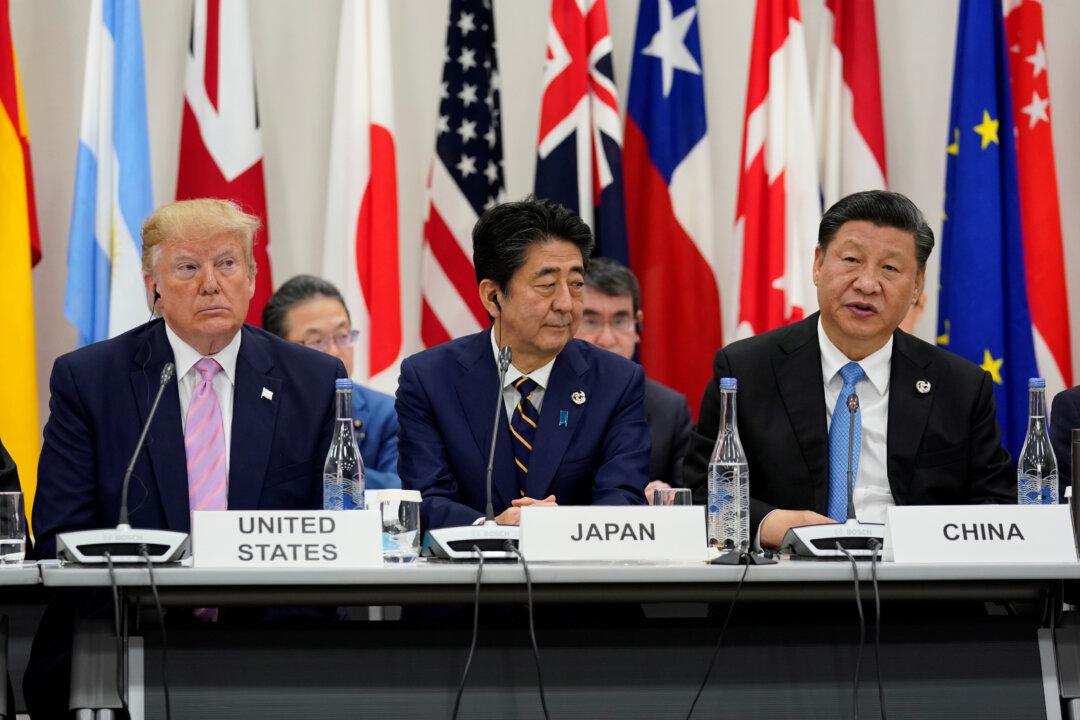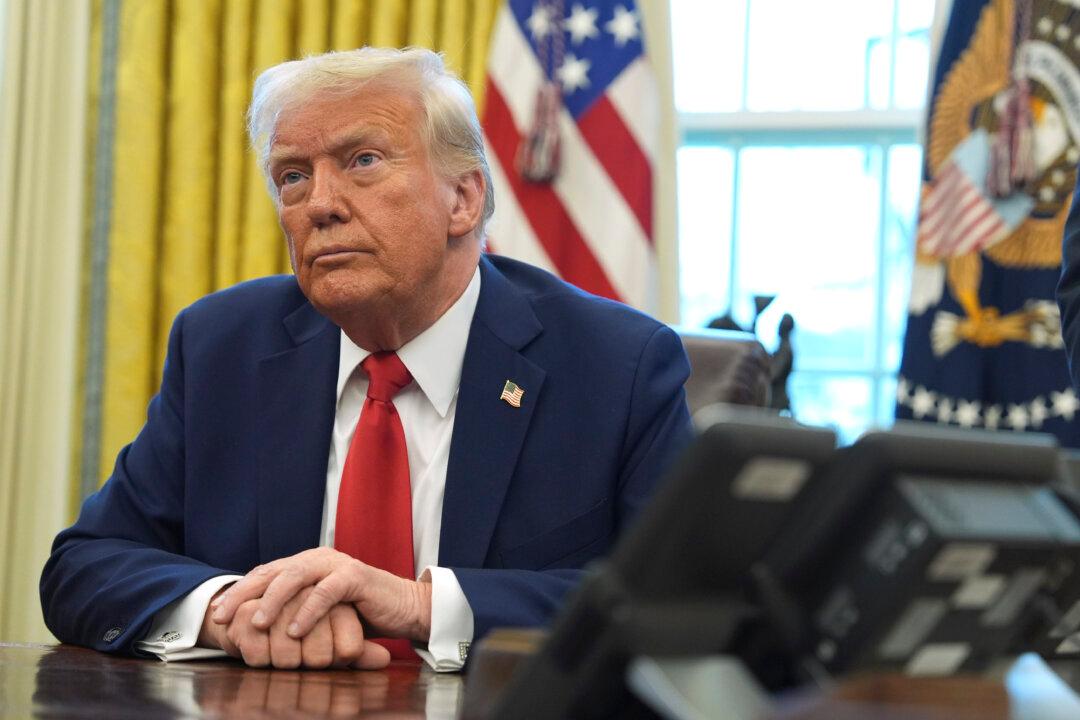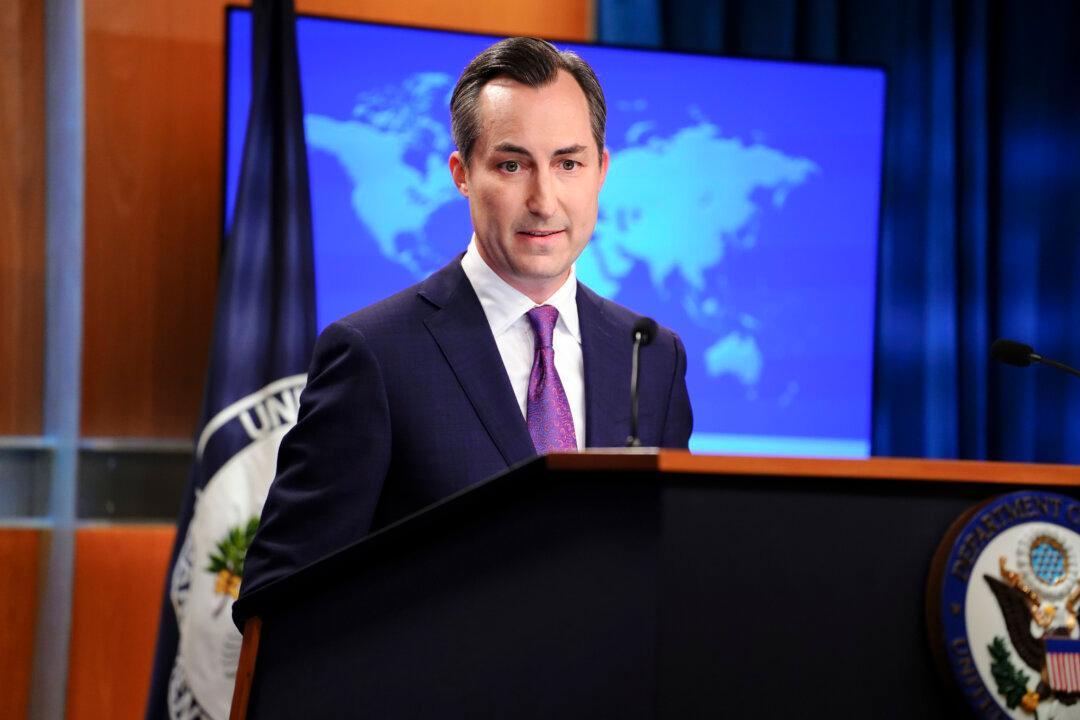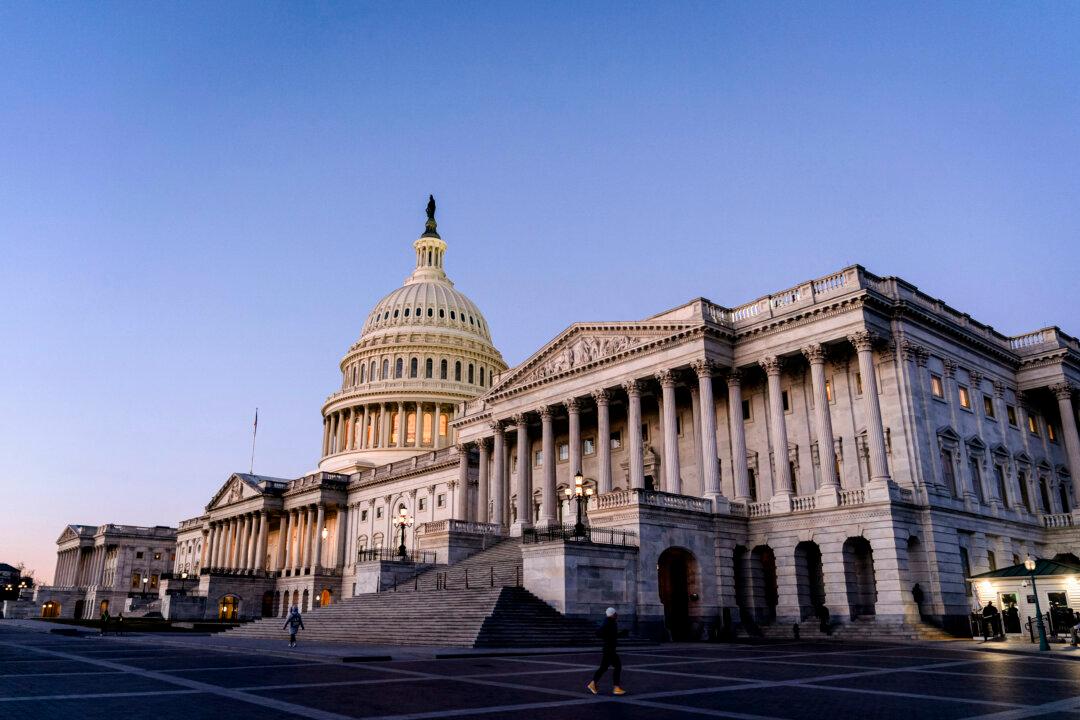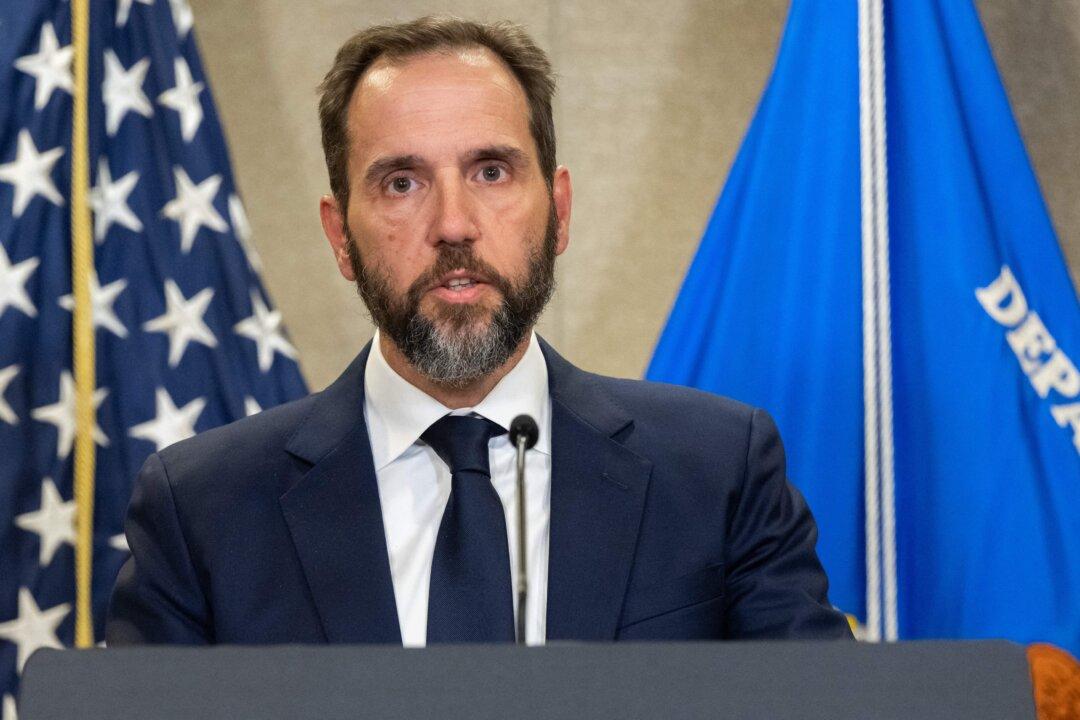Chinese leader Xi Jinping made sure to shake hands with President Donald Trump before the “family photo” at G-20 Summit in Osaka, Japan on June 28.
As world leaders moved to their allotted positions during the photo-op, Xi, after first shaking hands with German Chancellor Angela Merkel, made a beeline towards Trump, who was several spots away in the first row. They shook hands and briefly exchanged some words. Xi then turned back to take his assigned place. On his way towards Trump, Xi breezed past Russian President Vladimir Putin, whom the Chinese leader had described as his “best friend” earlier this month.
